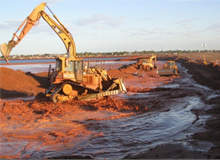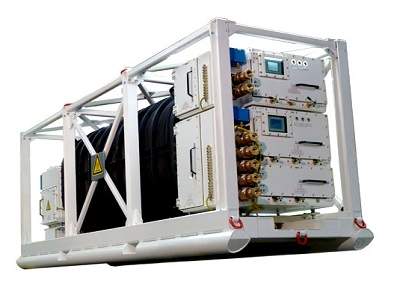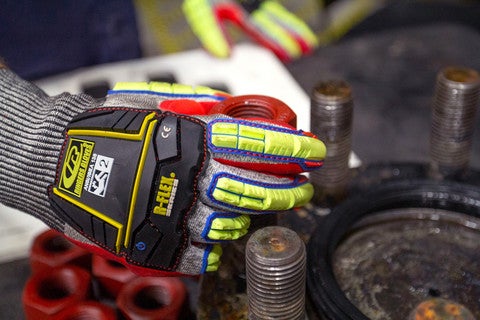Gold the most mentioned term on Twitter Q4 2021
Gold leads as Mining Technology lists the top five terms tweeted on commodity markets in Q4 2021, based on data from GlobalData’s Mining Influencer Platform.
The top trends are the most mentioned terms or concepts among Twitter discussions of more than 150 commodity markets experts tracked by GlobalData’s Mining Influencer platform during the fourth quarter (Q4) of 2021.
1. Gold – 2,450 mentions
Western Australia’s Agnew gold mine to be powered by 95% renewable energy, the central bank of Singapore increasing its gold reserves by 20% in 2021, and climate change expected to drive consolidation in the gold mining industry were some of the popular discussions in Q4 2021.
ABC News, a news website, shared an article on South Africa-based gold mining company Gold Fields’ Agnew gold mine being planned to be powered by 95% renewable energy. The Agnew gold mine is one of the first sites globally to combine gas, solar, wind, and battery storage to power its operations, as part of the $112m Agnew Hybrid Renewable Project. The project was delivered by utilities company EDL Energy under a ten-year agreement with Gold Fields and has been operating since 2020.
The mine is currently powered by up to 60% renewable energy. Gold Fields is now working on a solution that will enable the mine as well as underground equipment and processing plant to be operated on 90%-95% renewable energy, the article detailed. The adoption of renewable energy in the private sector will enable the Australian government to achieve its net zero target by 2050, the article highlighted.
Gold was also discussed by Kitco News, an online platform covering precious and base metals information, on Singapore’s central bank Monetary Authority of Singapore (MAS) boosting its gold reserves by 20% in 2021, by purchasing gold for the first time since 2000. The MAS’ International Reserves and Foreign Currency Liquidity report highlighted that 26.35 tonnes (t) of gold was purchased between May and June 2021, which boosted the country’s total gold reserves to 153.76t. The gold acquisition is expected to have been worth $1.5bn, the article noted.
In another tweet, High Grade, a metals and mining sector specialist, shared an article on Newmont Corporation’s CEO Tom Palmer stating that climate change issues will lead to increased consolidation in the gold mining sector. Palmer stated that investments needed to reduce carbon emissions in the sector, such as the deployment of electric trucks and the use of renewable energy, require large scale and longer life mines. Furthermore, one of the biggest challenges facing the gold industry is the presence of too many gold companies compared to other mining sectors. The industry, therefore, needs to collaborate in order to gain the attention of investors who are highly skewed towards climate change targets, reducing emissions, and sustainability metrics. Palmer added that the gold industry needs both life and scale to meet the 2030 emission reduction targets and net zero goals of 2050.
2. Silver – 1,951 mentions
Silver miner Hidalgo Mining suing investment bank JP Morgan Chase for commodity price manipulation, mining company Rio Tinto Exploration Canada (RTEC) expected to earn 51% stake in Janice Lake copper-silver project, and mining firm Wheaton Precious Metals’ silver purchase agreement with gold developer Artemis were some of the popular discussions in Q4.
David Morgan, a silver analyst, shared an article on a lawsuit filed by Hidalgo Mining against JP Morgan over a price-fixing allegation, which led to the closure of the Dorosa silver mine. The complaint details how Hidalgo raised $10.35m from investors in order to fund the silver mine that started production in 2012 and shut down in 2014, the article noted. Hidalgo alleged that JP Morgan altered market prices, after an investigation by US regulators found that a staff member from the bank had sent fake buy and sell orders into metals and treasuries markets between 2008 and 2016 to change prices in its favour, the article highlighted.
Silver was also discussed by Cecilia Jamasmie, a journalist, on the RTEC expected to earn 51% stake in Forum Energy Metals’ 100% owned Janice Lake copper-silver project located in Saskatchewan, Canada. Rio Tinto earned the right to acquire the stake after fulfilling a $10m exploration expenditure obligation as part of an option agreement signed with Forum in 2019. The company will pay $78,183 in cash to Forum by May 2022 to complete the earn-in obligation, the article noted.
In another tweet, a mining magazine shared an article on Wheaton’s $176m offer to Artemis to purchase the silver stream from the latter’s Blackwater gold project located in British Columbia, Canada. The article detailed that Wheaton agreed to purchase 50% of the silver stream from the Blackwater mine until about 18 million oz of silver is delivered. The stream will be reduced to 33% of production for the mine’s remaining life. Wheaton will provide ongoing payments of up to 18% of the spot silver prices until the up-front payment is brought down to zero, and 22% of the spot price after that, the article highlighted.
3. Copper – 384 mentions
Low global copper supply hindering climate goals, new methods for improving copper recovery, and approval for Canada-based mining company Capstone Mining’s mine plan for Pinto Valley copper mine were some of the popular discussions in the last quarter.
Ernest Scheyder, an energy correspondent, tweeted an article on views expressed by mining company Freeport-McMohan’s CEO Richard Adkerson who stated that low global copper supply is jeopardising climate goals. Adkerson stated that copper supply shortage will become a huge challenge for industries including electronics, wiring, and electric vehicles, and added that the supply will not increase unless regulators approve more mines. The shortage became evident after the copper stockpiles in London Metal Exchange’s global warehouse dropped to levels unseen in the last 25 years, the article highlighted.
Engineering & Mining Journal, a trade journal for mineral and mining professionals, tweeted about new methods that can improve copper recovery. Experts believe that certain new scientific methods could be game-changing in the copper industry. The Mining and Microbiome Analytics Platform (MMAP), for example, aims to create an inventory of micro-organisms and their genome information based on 15,000-20,000 samples collected from mines. Some of the microbes can be used to increase permeability in the ore and thereby improve recovery from heap leach applications in copper, according to the article.
In another tweet, a website covering mining news shared an article on Capstone Mining’s new mine plan for the Pinto Valley copper mine located in Arizona, US, being approved by the US Forest Service. The mine has received full permission to operate until 2039 and is expected to produce 2.5 billion pounds of copper, the article noted. The Pinto Valley mine along with the Cozamin mine in Mexico are expected to produce between 175 million and 190 million pounds of copper, the article detailed.
4. Coal – 247 mentions
China’s coal miners aiming to boost output to deal with the power crisis in the country, Bulgarian coal miners protesting for job security amid mine closures in the European Union (EU), and Switzerland-based mining company Glencore’s Mangoola coal extension plan receiving Federal approval were some of the popular discussions in Q4.
Neil Hume, a national resources editor at the Financial Times, tweeted on China’s coal miners aiming to boost production to increase coal supply as the country is facing a power crisis that is threatening its economic growth. Coal-fired power generation accounts for 70% of the country’s electricity. Government officials directed all state-owned energy companies to secure their supplies ahead of winter, the article noted. Energy prices and demand for natural gas and coal have surged as major economies across the world began to reopen after the lockdowns imposed due to the Covid-19 pandemic. Coal and natural gas supplies have, however, failed to keep up with demand, with Asia and Europe facing increased competition to secure supplies.
In another tweet, Anas Alhajji, an energy markets expert, shared an article on Bulgarian coal miners stating that the EU timeframe for shutting down coal mining and coal extraction is too short. Hundreds of coal miners and energy workers participated in a protest demanding new jobs amid the planned closures. Organisers argued that the EU’s time frame for phasing out coal should not come at the cost of livelihoods and carbon-dependent regions. The two largest trade unions organising the protest stressed that they were protecting the country’s energy independence.
Coal was also mentioned by a mining news and information publication in a tweet on Glencore’s extension plan for the Mangoola coal mine located in New South Wales, Australia, receiving the Federal government’s approval. A new open-cut pit will be developed at the mine extending its mine life by eight years to December 2030. The extended mine will produce 52 million tonnes (Mt) of coal and include the construction of a new haul road overpass and a new water management system. The project is expected to generate more than 200 jobs and support more than 50 local companies, the article highlighted.
5. Lithium – 199 mentions
Lithium prices rising due to the rapid growth of the electric vehicle (EV) sector, lithium developer Sayona Mining raising A$100m ($72.5m) for purchasing the Moblan lithium mine, and the EV industry driving the demand for lithium were some of the popular discussions in the fourth quarter.
Simon Moores, CEO of Benchmark Mineral Intelligence, a specialist provider of lithium-ion battery supply chain information, shared an article on the rapid growth of the EV industry leading to a rise in lithium prices as well as driving the demand for graphite. Lithium hydroxide prices approached $30,000 a tonne (t), from the 2018 peak of $25,000/t, the article detailed. Furthermore, prices of battery-grade carbonate increased by 15.6% in the first two weeks of October to $28,675/t, which a 322% year-to-date gain. Lithium iron phosphate (LFP) batteries accounted for 58.3% market share in Chinese cell production in September 2021, a 252% year-on-year increase. Experts believe that the exponential growth of the EV sector will drive the demand for graphite in the coming years in addition to the demand from the existing sectors such as the refractory industry. Increase in supply in line with demand could keep the prices less volatile in other battery raw material markets, the article added.
In another tweet, a website covering news and information on the mining industry tweeted on Sayona Mining raising A$100m ($72.5m) in a share placement and a further A$25.5m ($18.5m) through a rights issue, to fund the purchase of the Moblan lithium mine located in Quebec. The company signed an $86.5m deal with private royalty and streaming company Lithium Royalty to acquire 60% interest in the Moblan mine. The acquisition provides a significant growth opportunity for the company enabling it to establish a new lithium base in northern Quebec where it already operates the Abitibi lithium hub, the article highlighted.
The American Exploration & Mining Association, a non-profit organisation, mentioned the term in an article on the EV sector driving the demand for lithium. The global lithium production, for instance, increased by 116% between 2016 and 2020 as lithium is a key ingredient among a range of critical minerals used by the EV sector. The increase in demand for EVs is being driven by government incentives and rising consumer awareness, the article noted. China and Europe are the leading adopters of EV, while the US is lagging behind. Experts believe that the US will need to develop its own lithium supply chain, right from mine to battery, to improve its rank.
[ad_2]
Source link





